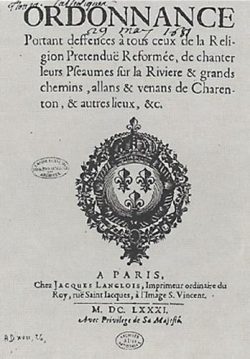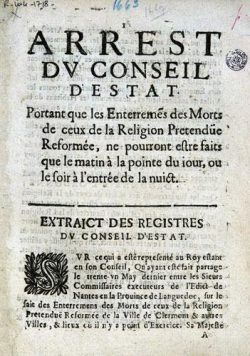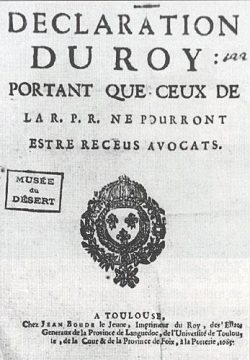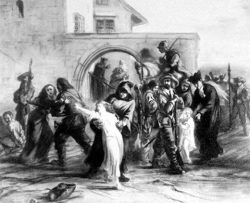Legal harassment (1661-1685)
Under pressure from the clergy, and so as to force Protestants to conversion, Louis XIV implemented the Edict of Nantes in a more and more restricted way. Hence the term “edict of rigour” was adopted.
Complaints from the clergy
In 1661 began the personal rule of Louis XIV. The king’s ambition was to bring back to the Catholic Church those who had left it. He considered this a necessity for the unity of the kingdom.
Even though his efforts were hampered by external circumstances, the king went ahead with his plans. These were slowed down during the Devolution war (1667) against Spain and during the war with Holland (1672-1678). The latter came to an end with the peace treaty of Nymegen. Louis XIV had won the war. When at the height of his power, the king became “pious” and resumed his policy of legal persecution.
The king appointed royal representatives to lead enquiries into complaints by the clergy brought to him after the meeting of the French bishops in 1656. From 1665 onwards, the superintendent of each province was entrusted with the role of royal representative.
A number of clerical lawyers justified a restrictive interpretation of the Edict of Nantes on the grounds that the latter had been obtained by force by the “so-called Reformed Church” in times of war.
A newly established legislation systematically destroyed the Edict by series of decrees of the king’s council and royal statements. Seventy-five decrees were enforced from 1661 to 1678 and another hundred from 1679 to 1685.
Worship and teaching
At the request of the diocesan clergy, the king’s representatives rigorously inquired into the regularity of Reformed faith worship. The order to close Protestant churches was given whenever an irregular situation was observed, and more particularly if their existence in 1596 or1597 could not be proved. The only solution left was an appeal to the king’s council, but this had little chance of success. Over a period of five years more than 250 out of 700 Reformed churches were closed and sometimes destroyed, as was the case in Saint-Hippolyte-du-Fort (Gard). In 1661 these measures were accompanied by a ban on the singing of psalms outside the churches and in 1663 by a ban on preaching in the vicinity of churches that had been closed down by royal order.
Protestant funerals are tolerated only at night and with a minimal attendance. Worship in the castles of protestant lords was hampered in 1682 and banned in 1684.
Reformed schools were forbidden and, in order to exhaust the recruitment of pastors, the academies where they were trained were closed from 1681until 1685.
Access to duties and honours
The members of the Reformed Church were likewise targeted in their civil and professional life : they were gradually excluded from municipal and legal jobs. Reformed jurists became lawyers until they were excluded also from this profession in 1685.
From 1664 onwards, Protestants were excluded from most of the guilds, from health professions and particularly from the book trade.
Freedom of conscience
The very precise stipulations of the Edict of Nantes concerning freedom of conscience were no longer applied. Heavy sentences were decided in 1663 to prevent any return to the “so-called Reformed religion” by new converts to Catholicism.
In 1680, in order to prevent mixed marriages, conversion to Protestantism was prohibited.
One’s private residence was no longer a refuge from “the converters”. In 1666, priests were allowed to visit the sick in order to inquire as to whether they wanted to die in the “so-called Reformed religion”. But, as from 1669, a priest could visit the sick only if accompanied by a magistrate and only at the request of the patients themselves. However, as from 1680, judges were ordered to go to the patients’ homes and call a cleric.
In 1681, children could be taken away from their parents’ custody of in order to be raised by a Catholic relative. Boys could be placed in a Jesuit grammar school and girls in a convent. Their conversion was declared valid as soon as they reached the age of seven.
Bibliography
- Books
- CARBONNIER-BURKARD Marianne et CABANEL Patrick, Une histoire des protestants en France, Desclée de Brouwer, Paris, 1998
Associated tours
-
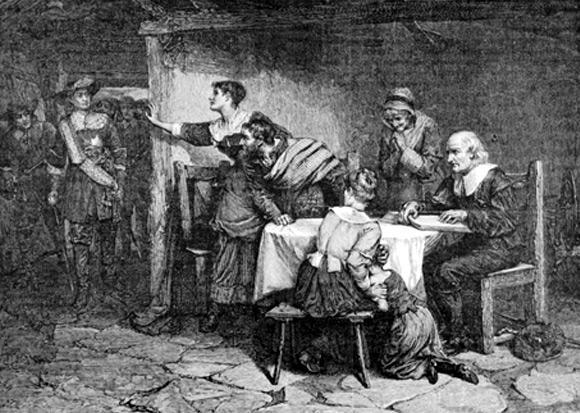
The rigorous edict (1661-1685)
As the Catholic clergy launched missions for the conversion of Protestants, Louis XIV implemented policies aiming to reduce and eventually put an end to Protestantism in the Kingdom. He began...
Associated notes
-
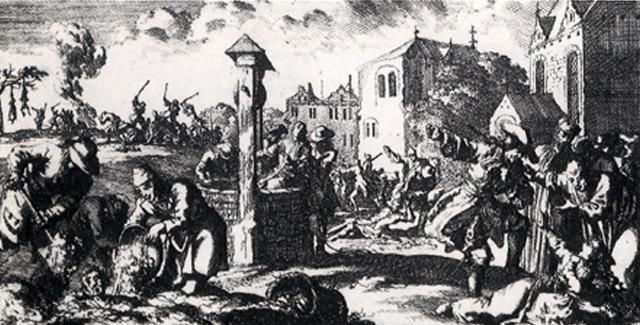
The Edict of rigour (1661-1685)
While the Catholic clergy launched missions for the conversion of Protestants, Louis XIV set up a policy that restricted the scope of the Edict of Nantes and then launched a... -

The Protestant resistance (1661-1700)
The Protestants were prisoners of their own loyalty to the King. This is why they showed little resistance to the restrictive measures taken against them by Louis XIV. -
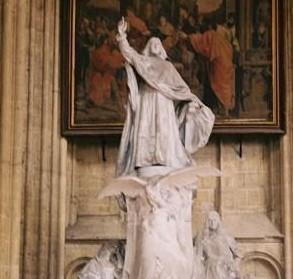
The conversion policy (1660-1685)
While the edict was “rigorously” enforced, the Catholic Church used peaceful means to prompt Protestants to convert. These included the proposal of financial means. -
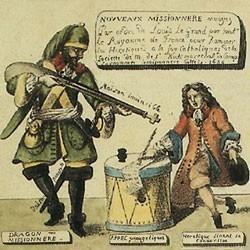
The "Dragonnades" (1681-1685)
A “Dragonnade” was the forced lodging of dragoons, the king’s soldiers, in Huguenot homes. The latter were looted and mistreated until they renounced their faith. -

The Reformed Church and the king (1630-1660)
Why was the Protestant reaction to the oppressive methods used by Louis XIV so timid ? The explanation can be mostly found in their idolatrous submission to the king.

